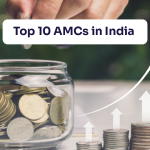Do you know what the biggest theme of present times is?
Ever since the coronavirus pandemic has surfaced, a narrative has been getting built up in the investor community—global corporations are looking to diversify their supply chains away from China, and India is going to be their most favoured destination.
This chorus is getting louder. But before you get sold on the theme and commit your hard-earned money, let’s run a fact check.
Coronavirus pandemic has earned China a lot of ill-reputation which has resulted in a trust deficit. Rules of international trade are being redrawn. Governments in various countries have been encouraging their corporations to reduce their China dependence and even offering incentives to relocate them elsewhere.
Parallel to arresting the spread of coronavirus, the Indian government has been drawing up plans to attract more Foreign Direct Investments (FDIs). According to some recent media reports, the Indian government has keyed out land equal to twice the total area of Luxemburg to firms relocating to India from China—shows the sense of urgency. Indian government is believed to have identified 4.62 lakh hectares of land across the country which also includes 1.15 lakh hectares of existing industrial land.
Until recently, land acquisition was a pain point in setting up an industry in India and often involved a lot of massive political lobbying and interference.
Therefore, the claims that India may benefit by the supply chain diversification of global corporations away from China are valid.
Now comes the critical question of how far India will go in this process?
To understand this, let’s go back to basics.
Growth in international trade has helped many countries, including China, create jobs, foster economic growth and scale down poverty levels in society. On the back of a huge trust deficit China has incurred due to coronavirus pandemic, there’s an empty spot in the Global Value Chain (GVC).
In plain English, GVCs represent the splitting up of production processes in such a way that, firms specialized in a specific area would focus only on supplying that particular part, and not the whole assembly. For example, an Auto sector Original Equipment Manufacturer (OEM) originated in the West may source critical components from a South East Asian country but that country won’t manufacture any car that uses the part manufactured by it.
Development of GVCs was an outcome of globalization and industrialization. The level of a country’s participation in GVCs decides its developmental path, economic prosperity and job creation to a large extent.
GVCs have to run as a well-oil machine.
Between 1970 and 2007 GVCs grew by leaps and bounds and their share in international trade went up by approximately 40%. However, in the aftermath of 2008, the growth in GVCs has stagnated and has started waning.
No wonder, India’s share in the global merchandise exports has remained abysmally low when that of China went up multifold. Furthermore, despite China cutting back its export reliance (over the last 5-7 years) India hasn’t been able to capitalize on the available opportunities.
China’s success can be summarized with a famous quote of Deng Xiaoping—a man who transformed China’s economy from a closed-door-communist-economy to a market-driven-economy-with-communist-fabric.
Rather than getting into theoretical debates, China focused on solving problems and assessing results. China integrated its economy into the GVC when the international trade was set to grow multifold.
It introduced labour reforms that offered immense flexibility to global corporations in hiring and lying off. According to The Federation of American Scientists (FAS), large-scaled capital investments and massive productivity gains have enabled China to double the size of its economy in real terms every eight years.
India hopes to subsume 44 central labour laws into 4 codes—one each dealing with wages, industrial relations, social security, and occupational safety, health & working conditions. It took India almost 16 years to draft its new labour code since the 2nd National Labour Commission submitted its report in 2004.
This is not to say that India can by-pass any democratic process to grow; but if India is even thinking about replacing Made in China with Made in India, it has to step up and accelerate the pace of everything—building infrastructure, facilitating financing and creating a talent pool.
Delay in project approvals, high cost of capital, extreme regulatory controls and inconsistent policies usually affect the quantum of FDI inflows. Attracting greater FDI investment is one of the time-tested approaches to increasing the integration into GVCs. If India works on improving productivity, attracting capital shouldn’t be a hassle.
Each of these sectors has its peculiarity. For example, India already has a thriving chemical industry which provides employment opportunities to nearly 2 million people and has a share of 12.5% in the export market of chemical products. Also, the sector has attracted FDI of USD 17.4 billion on a cumulative basis between April 2000 and December 2019. Similarly, industries such as food processing and textiles have been highly labour intensive and together contribute over 1/5th of India’s total merchandise exports.
On the other hand, sectors such as renewable energy and medical devices are yet to evolve completely; but enjoy an immense scope for growth. For instance, India has so far utilized just ~8% of its potential power generation capacity (through renewable sources).
Interestingly, auto sector which comprises close to half of manufacturing GDP isn’t a focus area of the government. This is partially a reflection of a lull in the global auto industry and structural changes that have still not played out completely.
In a nutshell…
It’s time for India to get over theoretical debates and swing into action—time to grow its clout and emerge as not just the next global manufacturing hub but importantly the global growth engine.
Themes discussed among stock market investors need to see the light of the day for them to be rewarding. Else, all themes end with a suffix of dotcom.
You may also like to read:
Culture or Agriculture: What needs a bigger debate?
Disclaimer:
We, Ventura Securities Ltd, (SEBI Registration Number INH000001634) its Analysts & Associates with regard to blog article hereby solemnly declare & disclose that:
We do not have any financial interest of any nature in the company. We do not individually or collectively hold 1% or more of the securities of the company. We do not have any other material conflict of interest in the company. We do not act as a market maker in securities of the company. We do not have any directorships or other material relationships with the company. We do not have any personal interests in the securities of the company. We do not have any past significant relationships with the company such as Investment Banking or other advisory assignments or intermediary relationships. We are not responsible for the risk associated with the investment/disinvestment decision made on the basis of this blog article.

Top 10 AMCs in India
5 min Read Jan 6, 2026
Market outlook 2026: Essential Do’s and Don’ts for Successful Investing
5 min Read Jan 2, 2026
China Manufacturing PMI at 50.1 Signals Stabilisation, Copper Prices Rally
5 min Read Dec 31, 2025
F&O Lot Size Changes in India: What Traders Need to Know (Effective Jan 2026)
5 min Read Dec 31, 2025
Revisiting the Gold-Silver Ratio Amid Silver's Outperformance
5 min Read Dec 22, 2025
Post your comment
You must be logged in to post a comment.